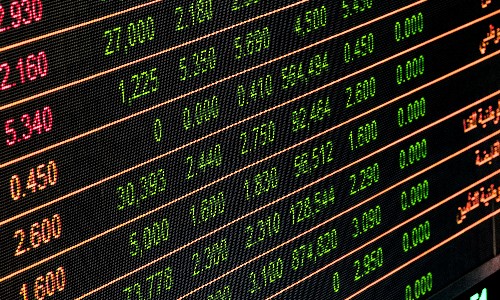The U.S. stock market ended the final quarter of 2018 with a sell-off of historic proportions. The decline was swift and sent the S&P 500 Index down 14% lower than where it began the quarter. December’s performance was notably the worst on record since 1931. It was an exclamation point to the worst calendar year since the financial crisis in 2008-2009.
A confluence of events triggered this selloff that also spilled over into commodities and credit. Slowing economic data coming from China and Europe combined with the ongoing U.S. China trade disputes, a flattening U.S. Treasury yield curve and plunging oil prices all contributed to worries about slowing global growth. All of this was within the context of the ongoing withdrawal of monetary accommodation. Through this episode the U.S. economy has remained resilient, with a few areas softening, such as housing and manufacturing data.
The real catalyst that ignited the decline seemed to come from Fed Chair Jerome Powell’s moderately hawkish comments he made in late November in which he said the central bank is a “long way” from getting rates to neutral. This raised the specter of a Federal Reserve policy mistake that could ultimately push the U.S. economy into a recession. Showing that he was not insensitive to the message the markets seemed to be expressing in December and to allay fears that the Fed was on an aggressive rate-hiking path, Powell walked back his previous comments. At the American Economic Association’s annual meeting on January 4th, he explained that the current Fed’s policy will consider economic conditions as they develop and the committee will be prepared to shift its stance significantly, if necessary, in order to meet its dual mandate of full employment and stable prices. He also voiced his opinion that the markets appear to reflect a more negative view of the strength of the U.S. economy and its outlook than the economic data seems to suggest. The market rallied on those comments and has been on better footing since then as a policy mistake from the Fed seems much less likely now.
What should we expect from here? We remain positive about 2019. Our economic conditions are beginning to return to a more normal environment where interest rates are approaching the neutral rate and the economy is slowing, but at a still healthy rate of growth. Inflation remains persistently low in the U.S. and across much of the globe. This should allow the Federal Reserve and the central banks in Europe and Japan to be able to slow their path of interest rate policy normalization in order to avoid disrupting economic growth. Valuations are reasonable, especially after the year-end sell-off. Volatility also seems to be calming down. Even though global growth slowed somewhat in the second half of 2018, we expect growth to remain durable.
Wild cards for 2019 are the political uncertainties around the trade disputes with China, potential disruptions from Brexit and the ongoing partial government shutdown in the U.S. In each case, it is in the interests of all parties to resolve their differences and to move forward. That said, these risks create the potential for periodic bouts of volatility until the outcome is determined. In all likelihood, much of this uncertainty will be at least partially resolved during this quarter.
What do we like? We continue to favor equities, domestic and emerging markets especially. Without a recession, bear markets tend to be short-lived and a recession still doesn’t look likely soon. Corporate earnings growth is slowing from last years estimated 23% increase in the S&P 500’s adjusted earnings per share. This year that growth will likely be in the 4-6% range. Because the market declined last year as earnings rose, valuations are better this year and we believe the macro environment will be supportive of a rebound in risk assets in general.
Emerging markets are interesting this year because they were hit the hardest during last year’s volatility. The strong U.S. dollar contributed to the headwinds the emerging markets faced. That will likely change this year as the Fed nears its neutral policy level and the U.S. economy comes off its tax-cut induced sugar high to more trend-like rates of growth. It is very likely the dollar may weaken as the year progresses, potentially boosting emerging market returns in the process.
In the fixed income arena, we continue to recommend a tilt toward quality and shorter duration. As short-term rates have risen, it makes less sense to hold many longer maturity bonds. If increasing signs of recession were to appear on the horizon, we would begin to lengthen our maturities in preparation for a fall in rates. We do not see that opportunity yet.
In summary, the stock market is fairly priced. The global economy has slowed but is still growing at a respectable pace. With inflation low, no apparent asset bubbles littering the landscape and no clear signs that a recession is at hand, there is no reason this business cycle cannot be extended further into the future. That could provide a nice path higher for stock prices.
Disclosures: The views expressed are those of Byron Green as of January 15, 2019 and are subject to change. The information contained herein does not constitute investment advice or take into account any investor’s particular investment objectives, strategies, tax status or investment horizon. Additionally, this publication is not intended as an endorsement of any specific investment. Investing involves risk and you may incur a profit or a loss. Information contained herein is derived from proprietary and non-proprietary sources. We encourage you to consult with your tax or financial advisor. Click here to read the GIM Form ADV Part 2 for a complete list of Green Investment Management’s services.
Click here to download printable PDF of GIM Market Commentary 01-15-2019

